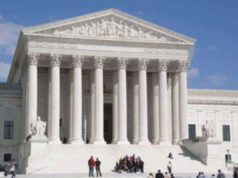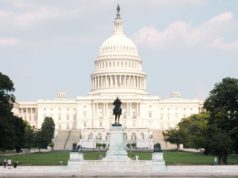
What are the Federal Rules of Civil Procedure?
• The Federal Rules of Civil Procedure are the laws that govern the civil process or civil lawsuits in the United States district court system. The Federal Rules of Civil procedure is promulgated by the Supreme Court of the United States in accordance to the Rules Enabling Act and the United States Congress.
• The Court system’s modifications to the Federal Rules of Civil Procedure are typically based on suggestions from the Judicial Conference of the United States—the federal judicial system’s internal policy-constructing body.
• Although the federal court system of the United States is required to apply the substantive law of the individual states (only with rules of decisions in cases were a state law is in question) the federal system typically uses the Federal Rules of Civil Procedure as their main guideline. A state court system may establish their own rules and subsequently apply them to their courts; that being said, the majority of states have adopted the rules based on the Federal Rules of Civil Procedure.
Brief History of the Federal Rules of Civil Procedure:
• The Federal Rules of Civil Procedure were established in 1938; when instituted they formally replaced the earlier common law pleading systems. Since their establishment, significant modifications have been applied to the Federal Rules of Civil procedure. Currently, the Federal Rules of Civil Procedure contains a notes section that details all changes made since 1938.
• The Federal Rules of Civil Procedure were completely restructured on December 1st of 2007, under the leadership of an experienced committee. The rewriting of the rules was not intended to drastically change the civil process, but instead to elucidate on the wording of the Federal Rules of Civil Procedure. Before the Federal Rules of Civil Procedure were established, the common-law pleading system was far more traditional, formal and particular in its phrasing.
Chapter Breakdown of the Federal Rules of Civil Procedure:
• In total, there are 86 rules listed in the Federal Rules of Civil Procedure; these rules are grouped into the 11 chapters listed below
o Chapter 1—The opening chapter to the Federal Rules of Civil Procedure reads as a mission statement; the rule simply states that the civil process shall be construed and administered to secure a just, inexpensive and speedy determination of the law
o Chapter 2—Chapter 2 of the Federal Rules of Civil Procedure talks about the proper commencement of civil suits, the service of process and the procedure to file a summons
o Chapter 3—This chapter of the Federal Rules of Civil Procedure covers defenses, counterclaims, motions and pleadings
o Chapter4—This chapter of the Federal Rules of Civil procedure contains Rules 17 to 25 and elucidates on parties.
o Chapter 5—Contains rules 26 to 37 and discusses discovery
o Chapter 6—Contains rules 38 to 53 of the Federal Rules of Civil Procedure; this chapter goes over the rules of the trial
o Chapter 7—Contains rules 54 to 63 and discusses rules surrounding the issuance of a judgment
o Chapter 8—Rules 64 to 71; goes over provisional and final remedies
o Chapter 9—Rules 74 to 76 and discusses special proceedings
Federal Rules of Civil Procedure: A Brief Guide
The Federal Rules of Civil Procedure (FRCP) are a set of rules that govern civil litigation in U.S. federal courts. They were adopted in 1938 and have been amended numerous times since then to ensure fair and efficient proceedings. This article provides a brief guide to the FRCP and their key provisions.
Purpose
The purpose of the FRCP is to provide a clear and uniform set of rules for all federal civil court proceedings. They are designed to promote fair and efficient litigation by establishing a framework for the entire litigation process, from filing the complaint to the final judgment.
Key Provisions
Here are some of the key provisions of the FRCP:
1. Pleading Standards – The FRCP establish the standards for filing a complaint and other pleadings, such as motions and answers. These standards ensure that the pleadings are clear, concise, and provide the necessary information to advance the case.
2. Discovery – The FRCP govern the discovery process, which allows parties to gather information from one another before trial. The rules ensure that the discovery process is fair and proportionate, with limits on the types of information that can be requested and exemptions for certain types of information.
3. Motion Practice – The FRCP regulate motion practice, which allows parties to request rulings from the judge on a variety of issues. The rules provide guidance on when and how to file motions, what must be included in the motion, and what factors the judge should consider when ruling on the motion.
4. Trial – The FRCP govern trial procedures, including the selection of the jury, the presentation of evidence, and the conduct of the trial. The rules ensure that the trial is conducted fairly and in an orderly manner.
5. Judgments – The FRCP govern the rules for entering judgments, including the types of judgments that can be entered and the requirements for doing so. The rules also provide guidance on post-trial motions, such as motions for a new trial or to amend the judgment.
Impact
The FRCP have had a significant impact on federal civil litigation since their adoption. They have helped to ensure fair and efficient proceedings, with clear rules and procedures governing every aspect of the litigation process. The rules have also been amended over time to reflect changes in technology and to address specific issues that have arisen in litigation.
Conclusion
The Federal Rules of Civil Procedure are a critical component of the U.S. federal court system. They provide a clear and uniform set of rules for all civil litigants and ensure that proceedings are fair, efficient, and predictable. Understanding the key provisions of the FRCP is essential for anyone involved in federal civil litigation, whether as a litigant, attorney, or judge.






























